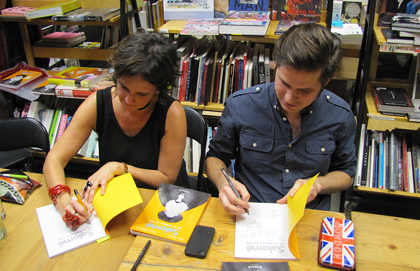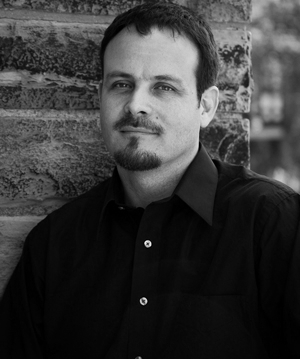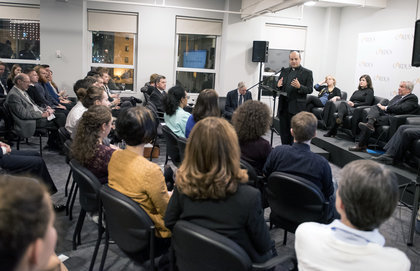“When people address religion, they address religion for what they see of religion…and what they see is people who do not behave as they would.” ~ Valérie Amiraux
Salomé et les hommes en noir is Valérie Amiraux’s bestselling book to date … and quite a bit different from her other publications. The comic (a collaboration with Francis Desharnais, who is best known for his graphic novel Burquette) is based on notes Amiraux took as she observed her three year-old daughter puzzling over their first encounters with the Hasidic community of Outremont.
Amiraux studies religious minorities and religious discrimination, processes of radicalization, and the representation of terrorism in popular culture. A citizen of France, she moved to Montreal 10 years ago to join the sociology department at the University of Montreal.
“It was August, two days after our arrival. I started walking with Salomé to discover the neighbourhood. One of the reasons I chose this neighbourhood is that it’s central. I don’t have a car. I needed to be in a very convenient place so that it’s easy for me to get to work, easy for schools, has easy connections to the airport. And Outremont is full of green spaces. Moving from Italy where we had a wonderful house in the countryside, I wanted to be located somewhere where she could play outside very easily.
“It was the first evening that I picked her up from the garderie. We started to explore the parks and playgrounds in the neighbourhood. She was very social, curious, talkative, and sensitive to the public culture of places. And her first question to me [as she noticed the Hasidic families in the park] was, ‘How come they are all dressed up like it’s winter?!’ It made such an impression on her. So that was the moment I realized that my professional interest in how minority religions could be treated in certain contexts would relate to my personal life in the neighbourhood.”
When she looks at Outremont, Amiraux does not consider the conflicts in the borough to be about religion as religion.
“When people address religion they address religion for what they see of religion. It’s about people’s perception: of rituals, of places, of schedules, of dress. It’s like a mirror or a glass window through which people look, and what they see is people who do not behave as they themselves would.
“It’s about dress, prayer, holidays, places of worship, modes of locomotion. It is really about the institutional existence of religion and its public visibility in the urban space. This is where discussion turns into controversy: where there is visibility and collective presence. What rituals and places of worship signal is that a lot of people are interested.…It’s the idea of numbers. It is not only that people are not addressing religion as religion, but that they are addressing what they think these signs signify: invasion.”







